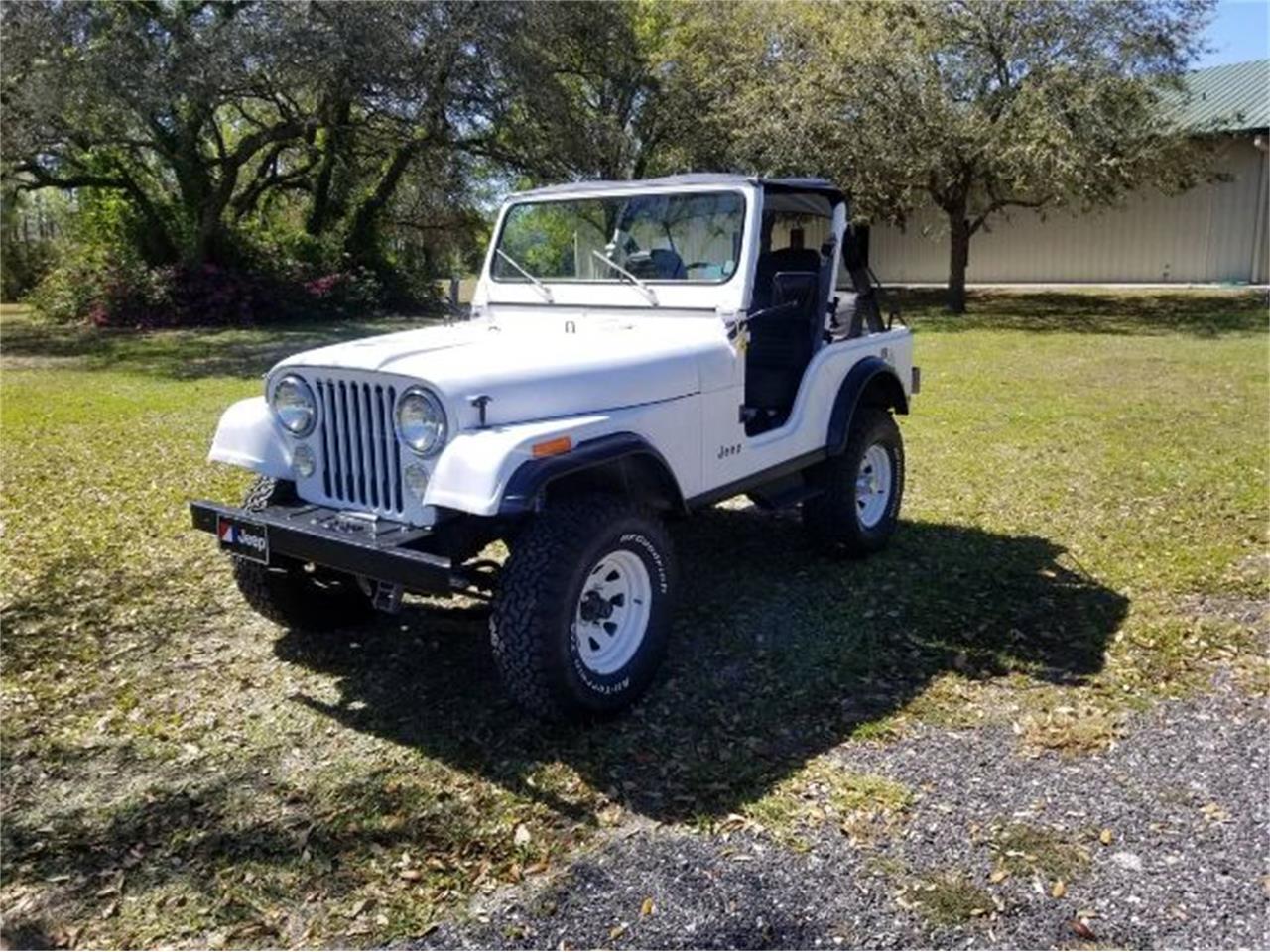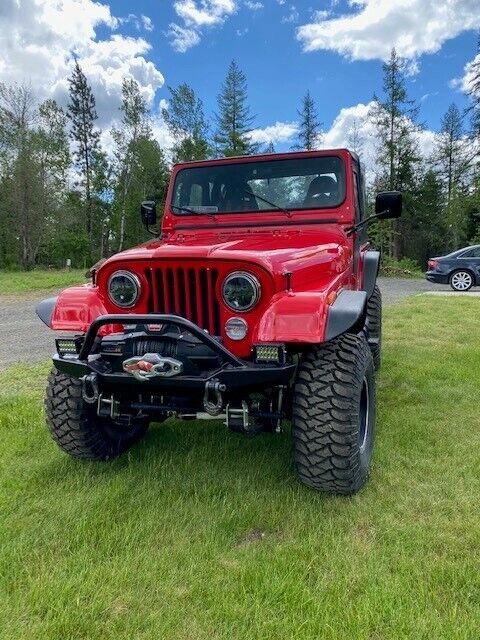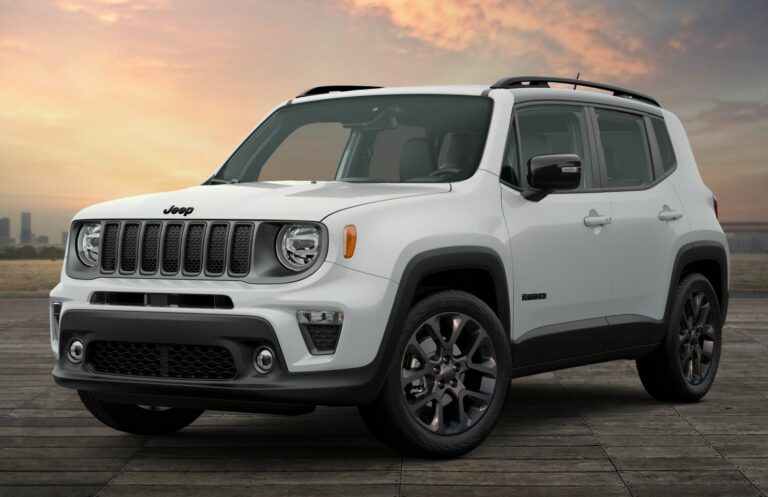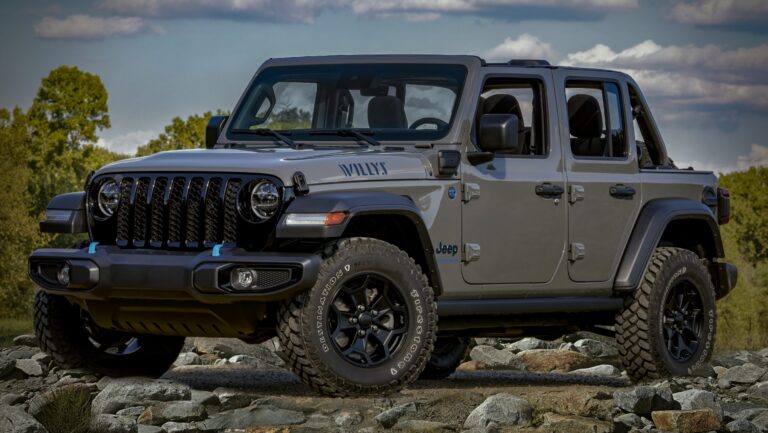1983 Jeep CJ5 Wheels For Sale: A Comprehensive Guide to Finding Your Perfect Set
1983 Jeep CJ5 Wheels For Sale: A Comprehensive Guide to Finding Your Perfect Set jeeps.truckstrend.com
The 1983 Jeep CJ5 holds a special place in the hearts of off-road enthusiasts and classic vehicle collectors alike. As the final year of the iconic CJ5 production run, these vehicles embody rugged individualism, timeless design, and unparalleled off-road capability. For any owner, whether restoring a vintage gem or enhancing a capable trail rig, the choice of wheels is paramount. Not just a cosmetic upgrade, the right wheels for your 1983 Jeep CJ5 profoundly impact performance, safety, and the vehicle’s overall aesthetic. This comprehensive guide, focused entirely on 1983 Jeep CJ5 Wheels For Sale, will navigate you through every aspect of purchasing, understanding, and maintaining the ideal set of wheels for your classic Jeep.
Understanding the Foundation: 1983 Jeep CJ5 Wheel Specifications
1983 Jeep CJ5 Wheels For Sale: A Comprehensive Guide to Finding Your Perfect Set
Before embarking on the hunt for 1983 Jeep CJ5 Wheels For Sale, it’s crucial to understand the foundational specifications that dictate compatibility and performance. Getting these wrong can lead to costly mistakes, compromised safety, or simply a poor fit.
The most critical specification for your 1983 CJ5 is the bolt pattern. All CJ5 models, including the 1983 iteration, utilize a 5×5.5 inch (or 5×139.7mm) bolt pattern. This means the wheel has five lug nut holes, spaced to fit a 5.5-inch diameter circle. Deviating from this pattern is not an option without costly and potentially risky adapters.
Other vital specifications include:
- Center Bore: This is the hole in the center of the wheel that fits over the vehicle’s hub. While many aftermarket wheels are "hub-centric" (designed to fit snugly) or "lug-centric" (centered by the lug nuts), ensuring a proper fit here helps prevent vibrations and ensures the wheel is properly seated.
- Offset and Backspacing: These terms describe how far the wheel sits in or out from the vehicle’s mounting surface.
- Offset is measured in millimeters from the wheel’s centerline. A positive offset pushes the wheel inwards, while a negative offset pushes it outwards.
- Backspacing is the measurement from the mounting surface to the back edge of the wheel.
- For the 1983 Jeep CJ5, choosing the correct offset/backspacing is vital for tire clearance, preventing rubbing against suspension components or fender flares, and maintaining proper steering geometry. Too much negative offset can put undue stress on wheel bearings and steering components.

- Diameter and Width: Stock CJ5 wheels were typically 15 inches in diameter, but aftermarket options range from 15 to 17 inches or even larger. The wheel’s width must also match your chosen tire’s width for proper bead seating and tire performance. Common widths for CJ5s range from 7 to 10 inches.
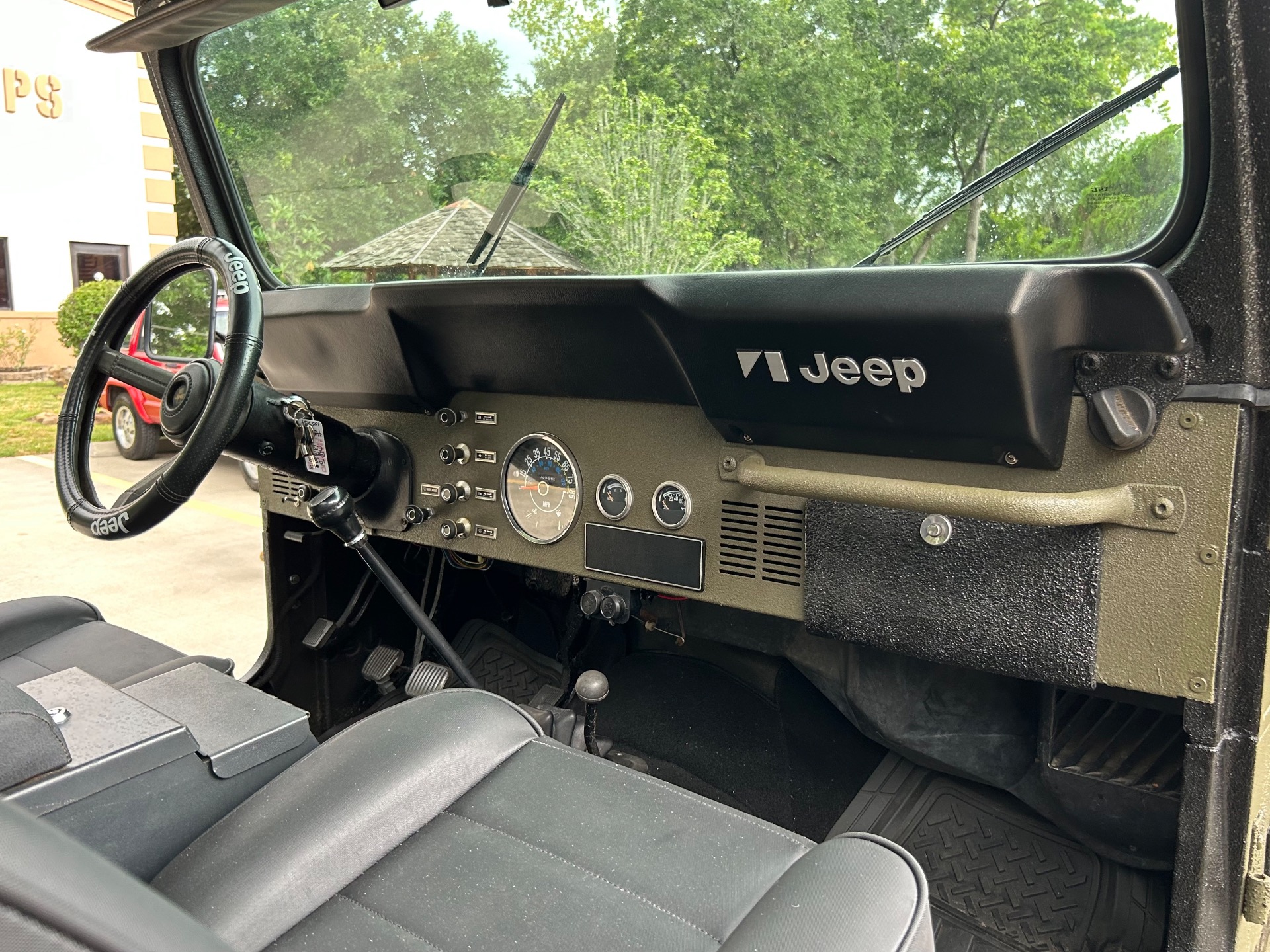
Knowing these specifications is the first step in making an informed decision when evaluating 1983 Jeep CJ5 Wheels For Sale.
Why Upgrade or Replace Your 1983 Jeep CJ5 Wheels?
There are numerous compelling reasons why owners seek out 1983 Jeep CJ5 Wheels For Sale, extending beyond simple aesthetics:
- Restoration and Period Correctness: For purists, finding original or period-correct wheels is essential for an authentic restoration. Maintaining the vehicle’s historical integrity often means sourcing wheels that match what came from the factory in 1983.
- Performance Enhancement: Upgrading to lighter alloy wheels can reduce unsprung weight, potentially improving handling and fuel economy. For serious off-roaders, larger diameter wheels might be needed to accommodate bigger tires for increased ground clearance and traction, or specialized beadlock wheels for extreme low-pressure crawling.
- Aesthetic Customization: Wheels are a major visual component of any vehicle. Owners often seek specific styles, finishes, or sizes to achieve a desired look, whether it’s a rugged off-road stance, a classic vintage appeal, or a modern customized appearance.
- Damage or Wear: Original wheels may be bent, cracked, severely corroded, or simply worn out from decades of use. Replacing damaged wheels is crucial for safety and proper vehicle operation.
- Tire Compatibility: If you’re planning to run larger or specialized tires, your current wheels might not be wide enough or have the correct offset to accommodate them safely and effectively.
![]()
Understanding your primary motivation will guide your search for the perfect 1983 Jeep CJ5 Wheels For Sale.
Types of 1983 Jeep CJ5 Wheels For Sale
The market for 1983 Jeep CJ5 Wheels For Sale offers a diverse range of options, each with its own characteristics:
- Original Equipment Manufacturer (OEM) Style Wheels: These are often steel wheels, replicating the classic "wagon wheel" or "D-window" designs that were common on CJ Jeeps. They offer a nostalgic look, are generally affordable, and very durable, though heavier than alloy alternatives. You might find actual vintage OEM wheels or new reproductions.
- Aftermarket Steel Wheels: Similar to OEM style, these are rugged, affordable, and popular for off-roading due to their strength and ease of repair (they tend to bend rather than shatter). Available in various finishes, most commonly black or white.
- Aftermarket Alloy (Aluminum) Wheels: These are lighter than steel, which can improve handling and fuel efficiency slightly. They also dissipate heat better, which is good for braking. Alloy wheels come in an enormous variety of designs, finishes (polished, chrome, black, machined), and sizes, offering extensive customization options. However, they can be more susceptible to cracking under extreme off-road impacts compared to steel.
- Vintage/Used Wheels: Sourcing period-correct wheels from salvage yards, private sellers, or online forums can be a rewarding experience for authentic restorations. The benefit is often lower cost and genuine vintage appeal, but the challenge lies in verifying their condition and structural integrity.
- Beadlock Capable Wheels: For serious rock crawling and extreme off-roading, beadlock wheels physically clamp the tire bead to the wheel, preventing the tire from coming off the rim at very low tire pressures. These are specialized, more expensive, and often not street-legal in all areas.
When searching for 1983 Jeep CJ5 Wheels For Sale, consider your intended use and budget when choosing between these types.
Where to Find 1983 Jeep CJ5 Wheels For Sale
The digital age has made finding specific parts like 1983 Jeep CJ5 Wheels For Sale much easier. Here are the primary avenues:
- Online Marketplaces: Websites like eBay, Facebook Marketplace, and Craigslist are popular for both new and used wheels. You can often find private sellers, small businesses, or even individuals liquidating old parts. Be cautious and always ask for detailed photos and condition reports.
- Specialty Jeep/Off-Road Retailers: Large online retailers such as Quadratec, Summit Racing, Morris 4×4 Center, and local 4×4 shops specialize in Jeep parts. They offer a wide selection of new aftermarket wheels, often with knowledgeable staff who can guide you on fitment.
- Classic Car/Jeep Forums and Clubs: Enthusiast communities are a goldmine. Websites like CJ-7.com forums, local Jeep clubs, or dedicated Facebook groups for classic Jeeps often have "for sale" sections where members buy, sell, and trade parts. This can be a great way to find rare or original 1983 Jeep CJ5 Wheels For Sale directly from other enthusiasts.
- Salvage Yards/Junkyards: While hit-or-miss, physical salvage yards can sometimes yield hidden gems, especially if you’re looking for original steel wheels or specific vintage designs. Be prepared to do some digging and thoroughly inspect any finds.
- Auto Swap Meets and Shows: Attending local or regional auto swap meets and classic car shows provides an opportunity to see wheels in person, negotiate prices, and often connect with sellers who specialize in vintage Jeep parts.
Key Considerations When Buying 1983 Jeep CJ5 Wheels For Sale
Making an informed purchase requires careful consideration beyond just finding a visually appealing set of 1983 Jeep CJ5 Wheels For Sale.
- Condition: This is paramount, especially for used wheels. Inspect thoroughly for:
- Cracks: Particularly on alloy wheels, these can be catastrophic.
- Bends: Look for signs of impact, especially on the inner lip. A bent wheel will cause vibrations and tire wear.
- Rust: Common on steel wheels. Surface rust can be cleaned and painted, but deep pitting can compromise structural integrity.
- Curb Rash/Scratches: Cosmetic, but can affect value.
- Prior Repairs: Welding on wheels is generally a red flag unless performed by a certified specialist.
- Fitment Verification: Reconfirm the bolt pattern (5×5.5), center bore, and critically, the offset/backspacing. Use online wheel calculators and compare to your current setup or desired tire size. Incorrect offset can lead to tires rubbing, poor handling, or excessive stress on components.
- Tire Compatibility: Ensure the wheel’s diameter and width are suitable for the tires you plan to use. If you’re upsizing tires, verify fender and suspension clearance.
- Brake Clearance: If your 1983 CJ5 has been upgraded with disc brakes (especially larger calipers), ensure the new wheels will clear them.
- Budget: Determine your spending limit. New aftermarket wheels can range from very affordable steel options to premium alloy designs. Used wheels offer cost savings but come with inherent risks regarding condition.
- Intended Use: Will your Jeep be a show vehicle, a daily driver, or a hardcore off-roader? This dictates the type of wheel you should choose (e.g., steel for durability, alloy for looks/weight, beadlock for extreme off-road).
- Legality: Be aware of local laws regarding wheel and tire protrusion beyond the fender flares. Some offsets might require wider flares.
Installation and Maintenance Tips
Once you’ve acquired your 1983 Jeep CJ5 Wheels For Sale, proper installation and ongoing maintenance are crucial:
- Professional Installation: While capable DIYers can install wheels, professional mounting and balancing are highly recommended. This ensures tires are properly seated, wheels are balanced to prevent vibrations, and lug nuts are torqued to factory specifications.
- Lug Nuts: Ensure you have the correct type of lug nuts for your new wheels. Alloy wheels often require specific lug nut seats (e.g., conical, spherical) different from those used on steel wheels.
- Torque Check: After driving approximately 50-100 miles on new wheels, re-check the lug nut torque. Wheels can settle, and lug nuts can loosen slightly.
- Regular Cleaning: Keep your wheels clean to prevent the buildup of brake dust, dirt, and road salt, which can corrode finishes, especially on alloy wheels.
- Tire Rotation and Balancing: Regular tire rotations (every 5,000-7,500 miles) and balancing will extend tire life and ensure smooth driving.
Challenges and Solutions When Buying 1983 Jeep CJ5 Wheels For Sale
The journey to finding the perfect 1983 Jeep CJ5 Wheels For Sale can present a few hurdles:
- Challenge: Finding Original/Period-Correct Wheels.
- Solution: Patience is key. Monitor classic Jeep forums, eBay, and specialized vintage parts dealers. Be prepared to pay a premium for truly original, well-preserved sets.
- Challenge: Rust on Used Steel Wheels.
- Solution: Surface rust is common and can often be addressed by sandblasting and powder coating or painting. Avoid wheels with deep, structural rust pitting.
- Challenge: High Shipping Costs for Large Items.
- Solution: Prioritize local sellers on Facebook Marketplace or Craigslist for pickup. If buying online, factor shipping into your budget or look for sellers offering freight shipping deals.
- Challenge: Verifying Condition for Online Purchases.
- Solution: Always ask for multiple, high-resolution photos from various angles. Request a video call to inspect them live. If possible, ask for a professional opinion if the seller is a shop.
Price Table: Estimated Costs for 1983 Jeep CJ5 Wheels For Sale
Please note that these prices are estimates and can vary significantly based on brand, condition, seller, and market demand. Prices are typically per wheel unless otherwise specified.
| Wheel Type/Condition | Description | Estimated Price Range (Per Wheel) | Notes |
|---|---|---|---|
| Used OEM Steel Wheels | Fair to good condition, original style (e.g., "wagon wheel"), some surface rust likely. | $50 – $150 | Often sold in sets of 4 or 5. May require sandblasting, priming, and painting for restoration. Authenticity is a key factor for collectors. |
| Refurbished OEM Steel Wheels | Professionally sandblasted, primed, and powder-coated or painted to original specifications. | $150 – $250 | Offers a like-new appearance and durability without the effort of DIY restoration. |
| New Aftermarket Steel Wheels | Replica style (D-window, modular), various sizes (15×7, 15×8), common finishes (black, white). | $75 – $150 | Durable, affordable, and widely available. A popular choice for off-roaders and those seeking a classic, rugged look. |
| Used Aftermarket Alloy Wheels | Good to excellent condition, various designs (Cragar, American Racing, Pro Comp), lighter than steel. | $100 – $300 | Price highly dependent on brand, design rarity, and overall condition. Thoroughly inspect for curb rash, bends, or cracks. Often sold as a set. |
| New Aftermarket Alloy Wheels | Popular brands, wide range of designs, finishes (polished, matte black, machined), and sizes. | $150 – $400+ | Offers significant aesthetic and performance upgrades. Lighter weight can marginally improve handling and fuel efficiency. |
| Vintage/Rare OEM Alloy Wheels | Original factory aluminum wheels (if applicable for ’83, though less common than steel), or highly sought-after period-correct aftermarket alloys. | $200 – $500+ | Highly desirable for authentic restorations. Condition is paramount, and rarity drives up the price. Finding a complete, undamaged set can be challenging. |
| Beadlock Capable Wheels | New, specialized wheels for extreme off-road use, designed to secure the tire bead at very low pressures. | $250 – $600+ | Primarily for dedicated off-road vehicles. Often not street legal in all jurisdictions. Require specialized mounting and maintenance. |
| Full Set (4-5 wheels) – Used | A complete set of used wheels, often without tires. Typically offers a slight discount over buying individual wheels. | $300 – $1500+ | Varies dramatically based on the type, condition, and desirability of the wheels. Always verify that all wheels in the set are from the same batch and have consistent specifications. |
Frequently Asked Questions (FAQ) About 1983 Jeep CJ5 Wheels For Sale
Q1: What is the correct bolt pattern for a 1983 Jeep CJ5?
A1: The 1983 Jeep CJ5, like all CJ models, uses a 5×5.5 inch (or 5×139.7mm) bolt pattern. This is a crucial specification to ensure compatibility.
Q2: Can I put larger tires on my 1983 CJ5 with new wheels?
A2: Yes, larger tires are a popular upgrade for CJ5s. However, going larger usually requires not just new wheels with appropriate offset/backspacing, but also a suspension lift kit and potentially fender flare modifications to prevent rubbing and ensure proper articulation.
Q3: Are steel or alloy wheels better for a 1983 CJ5?
A3: It depends on your intended use. Steel wheels are generally more durable, less expensive, and easier to repair (they tend to bend rather than crack), making them popular for serious off-roading and a classic look. Alloy wheels are lighter, offer more design variety, and dissipate heat better, which can be beneficial for on-road performance and braking.
Q4: How do I check for damage on used 1983 Jeep CJ5 wheels?
A4: Visually inspect for cracks (especially on alloy wheels), bends (check the inner and outer lips), excessive rust (on steel wheels), and any signs of previous repairs like welding. For alloy wheels, run your hand along the inside and outside edges to feel for any irregularities. For crucial checks, a professional tire shop can spin them on a balancer to detect hidden bends.
Q5: What is "backspacing" and "offset," and why are they important for my CJ5?
A5: Backspacing is the distance from the wheel’s mounting surface to its rear edge. Offset is the distance from the mounting surface to the wheel’s centerline. Both determine how far a wheel and tire assembly sits in or out from the vehicle. Incorrect backspacing/offset can cause tires to rub against the frame, suspension, or fender flares, and can negatively impact steering geometry and bearing life.
Q6: Should I buy new or used 1983 Jeep CJ5 wheels?
A6: Buying new guarantees perfect condition and often a warranty, but it’s more expensive. Used wheels can be significantly cheaper, especially for OEM or vintage styles, but come with the risk of hidden damage or wear. Always thoroughly inspect used wheels or buy from a reputable seller.
Q7: Do I need special lug nuts for new wheels?
A7: Often, yes. Steel wheels typically use a specific type of lug nut (e.g., acorn or conical seat), while alloy wheels usually require lug nuts with a different seat design to properly engage and secure the wheel. Always confirm the correct lug nut type with your wheel supplier.
Conclusion
The search for 1983 Jeep CJ5 Wheels For Sale is an exciting journey for any enthusiast. Whether you’re aiming for a historically accurate restoration, an aggressive off-road build, or simply a fresh new look, the right set of wheels is fundamental. By understanding the critical specifications like the 5×5.5 bolt pattern, carefully considering the type of wheel (steel vs. alloy), knowing where to find them, and diligently assessing their condition and fitment, you’ll be well-equipped to make an informed decision. Remember that wheels are not just aesthetic enhancements; they are integral to your CJ5’s performance, safety, and the overall joy of driving this iconic American legend. Choose wisely, and your 1983 Jeep CJ5 will continue to conquer trails and turn heads for years to come.
